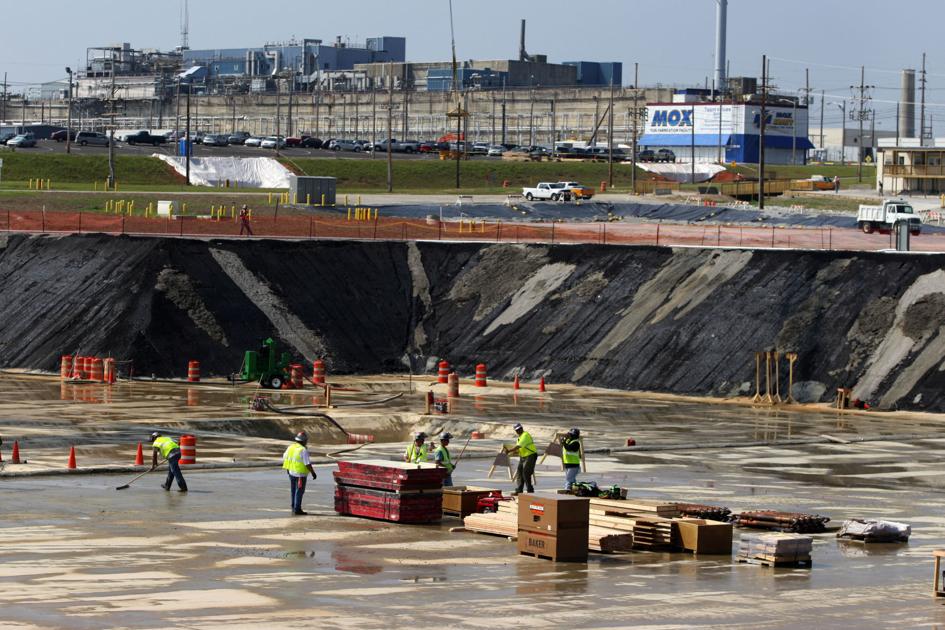A massive stockpile of the nation’s most dangerous nuclear material will stay in South Carolina for another 16 years and the U.S. Department of Energy will pay the state $600 million for housing it under the terms of a settlement announced Monday.
The deal, which ends nearly two decades of legal wrangling between the state and the federal government, makes official policy out of a promise that has long been given South Carolinians: The nation’s excess weapons-grade plutonium will eventually leave.
But the new policy comes with a caveat: It won’t leave fast.
The Energy Department will have until at least 2037 to remove a plutonium stockpile that it brought here in 2002 on the promise that it wouldn’t stay long. Prior to Monday’s announcement, the federal government had just 15 months to get the plutonium out.
The settlement gives it an extra 15 years, if not more. The deal is said to give the government another 5 years if it meets benchmarks along the way.
South Carolina has been locked into a protracted legal fight with the Energy Department for years, seeking to force it to move the plutonium out. Its case centered on a deadline Congress once set for the Energy Department to remove the material: the beginning of 2022.
The settlement is an acknowledgement by the state and the federal government that there was no chance the deadline would be met. An internal Energy Department study found that the plutonium couldn’t be removed until 2037 at the earliest, The Post and Courier and the Aiken Standard reported last year. The same study suggested the work of processing and shipping out plutonium could even stretch into the 2040s.
When Congress set its deadline, it said the Energy Department should pay the state a fine of $100 million a year if the plutonium stayed too long. The federal government will pay far less under the terms of the settlement — the equivalent of about $36.3 million a year through 2037 — but it is making its $600 million payment upfront.
South Carolina’s attorney general, Alan Wilson, says it’s the largest legal settlement in state history.
But the deal raised skepticism among politicians and watchdogs who have fought the Energy Department over the plutonium stockpile.
Gov. Henry McMaster told Wilson in a letter Sunday that he didn’t support signing away the state’s ability to sue. And he said he didn’t think the deal included enough assurances that the Energy Department would follow through.
“It is of paramount importance that South Carolina not become a permanent plutonium waste repository,” McMaster wrote. “Therefore, I cannot support a Settlement Agreement that extends DOE’s existing removal deadlines by up to twenty years and potentially sidelines South Carolina’s future leadership.”
Tom Clements, director of Savannah River Site Watch and a longtime watchdog of the Energy Department’s programs in South Carolina, said he was troubled that the announcement didn’t include more specifics about the Energy Department’s plans for removing plutonium or what it needs to do to meet the new deadline.
“Basically they’ve kicked the can down the road and given us no assurance that they’re going to be able to come up with a comprehensive plutonium management strategy,” Clements said. “I was really shocked.”
The U.S. consolidated much of its surplus plutonium in South Carolina in 2002 in an effort to clean up sites that were central to Cold War efforts to build nuclear weapons. Plutonium is the radioactive metal that starts the chain reaction that powers modern nuclear weapons. And it was used in some of the nation’s first nukes, including the Fat Man bomb dropped on Nagasaki.
The stockpile housed in South Carolina contains enough plutonium to build that bomb nearly 2,000 times over.
The Department of Energy brought the material for storage south of Aiken inside a reactor that once produced plutonium at the Savannah River Site, a Cold War-era federal installation the size of a small county.
Tucked inside a stand of pine trees, the Energy Department planned to build a factory that would convert scraps of plutonium into pellets that could be used by power plants. But the project was rushed from the beginning with incomplete designs, and it was later dragged down by project management failures and second thoughts in Congress, leading to long delays and massive budget overruns.
The so-called MOX project was abandoned in 2018. By then, federal taxpayers had already spent $8 billion on it.
Reach Thad Moore at 843-937-5703. Follow him on Twitter @thadmoore.


